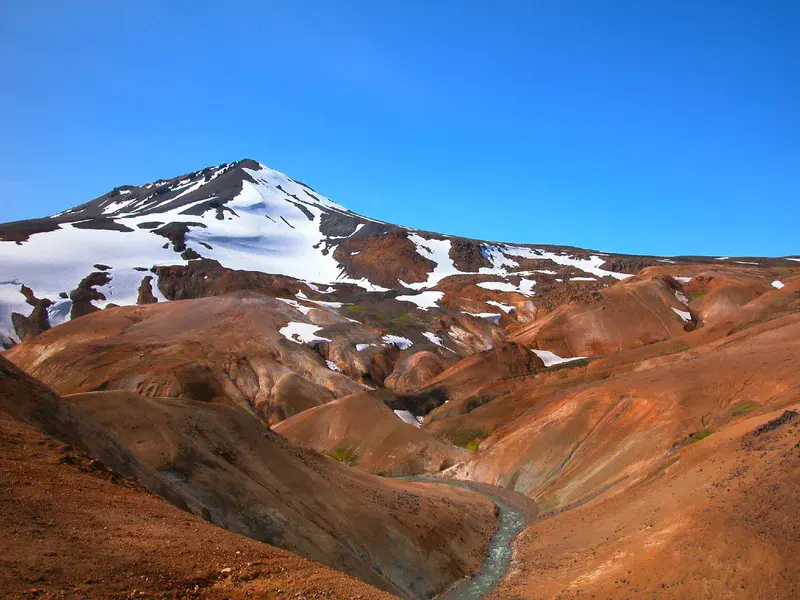
Kerlingarfjoll
by János Kovács, Dept Geology, Uni Pecs, Pecs, Hungary
Kerlingarfjoll were formed during a volcanic eruption in the Late Pleistocene. The area might still be active although it has not erupted in present time. Kerlingarfjoll is very different to the environment around, both in shape and color. They are mostly made out of rhyolite and both dark and bright tuff. There is also a lot of volcanic glass. When Kerlingarfjoll was being created, there was a glacier over the mid highlands. In certain places it seems that pillars of tuff reached out of the melting glacier ice. That is why there are tuff pillars with a lava top. Kerlingarfjoll are very weathered and have very little continuous growth, as the forces of nature, like glaciers, water flow, ice bursts etc. have been fast working in this rough mountain weather. Kerlingarfjoll is the center of volcanoes, with one of the most powerful hot spring areas in Iceland. Most subterranean heat is in Heradalir, with steam and clay geysers and their emission is mixed with sulfur. At the geysers there is creation of clay and the earth is boiled asunder. Where the glacier streams reach down into the valleys, the geysers have melted the ice and created impressive arches, caves and ice rocks. The growth around the hot spring area is also quite special. The multi colored geyser clay, the dense clouds of steam, the rhyolite mountains and the glaciers, all add to the diversity and beauty of this very special place.
Featured on GeoLog, the official blog of the European Geosciences Union
Categories
- Earth Magnetism & Rock Physics (352)
- Field (2899)
- Geochemistry, Mineralogy, Petrology & Volcanology (990)
Location
- Europe (3893)
- Northern Europe (924)
- Iceland (287)
- Exact location (-19.2867 W, 64.6458 N)
Colours
Image properties
3600 × 2700 px;
image/jpeg; 5.1 MB
Taken on 19
July
2010
Submitted on 3 May 2012
Licence
Creative Commons Attribution-NonCommercial-ShareAlike 3.0 Unported (CC BY-NC-SA 3.0)
Credit
János Kovács (distributed via imaggeo.egu.eu)
Share
Appreciate
Report